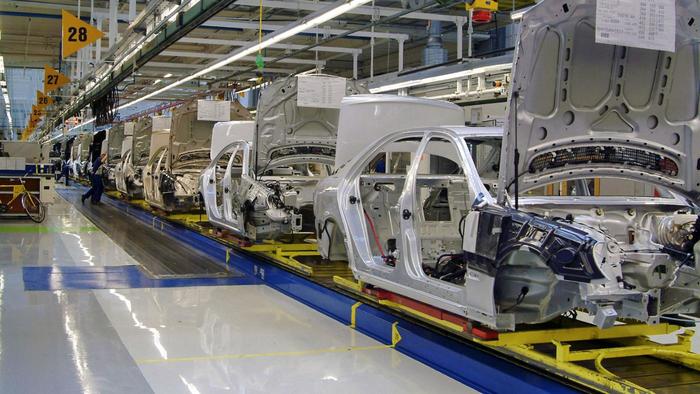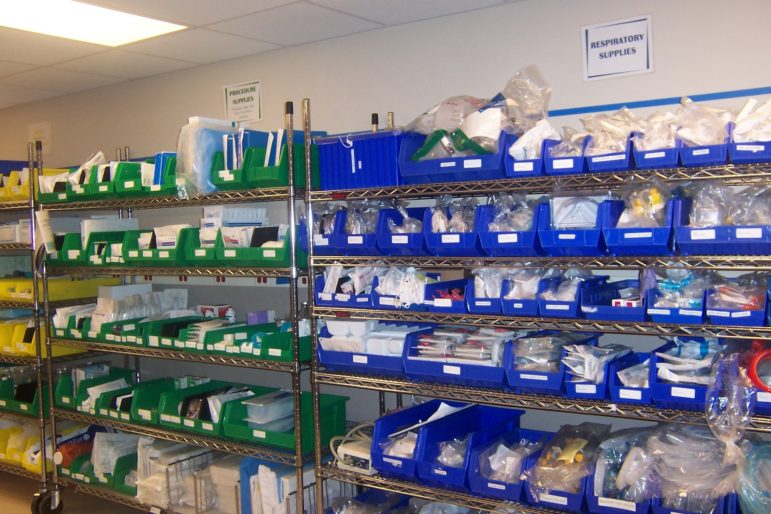 The world is made up of processes, whether it is at home or in the workplace, many things that we do involve processes. Some processes are time consuming and involve many steps while others are simpler and do not need many steps to complete. Being organized and having a set process is a good thing – and helps keep efficiency high – but only if the process itself allows for the the greatest optimization of time and talent; in other words if the process is truly efficient.
The world is made up of processes, whether it is at home or in the workplace, many things that we do involve processes. Some processes are time consuming and involve many steps while others are simpler and do not need many steps to complete. Being organized and having a set process is a good thing – and helps keep efficiency high – but only if the process itself allows for the the greatest optimization of time and talent; in other words if the process is truly efficient.
Inefficiency, especially in the workplace – in every industry – costs both a lot of time and money. For example, according to former Centers for Medicare and Medicaid Services (CMS) administrator Donald M. Berwick and RAND Corporation analyst Andrew D. Hackbarth, healthcare industry waste consumed between $476 billion and $992 billion in 2012. (This accounts for anywhere from 18 to 37 percent of total healthcare spending). Similarly, a panel of the Institute of Medicine (IOM) estimated in a September 2012 report that $690 billion was wasted in US healthcare annually, not including fraud. Looking at the numbers, it’s safe to say that annual healthcare non-fraud waste cost about half a trillion dollars in 2012. There must be a better, more efficient way to do things.
 In an effort to improve efficiency and allow people to have better, safer, work environments, raise productivity, and reduce costs — thus allowing firms to reinvest in themselves and their employees – many organizations are utilizing the methodology known as Lean Six Sigma. The Lean Six Sigma methodology is the result of the merger of two separate methodologies, Six Sigma and Lean, and is used worldwide to reduce waste and improve performance.
In an effort to improve efficiency and allow people to have better, safer, work environments, raise productivity, and reduce costs — thus allowing firms to reinvest in themselves and their employees – many organizations are utilizing the methodology known as Lean Six Sigma. The Lean Six Sigma methodology is the result of the merger of two separate methodologies, Six Sigma and Lean, and is used worldwide to reduce waste and improve performance.
Six Sigma, which was first developed two employees of Motorola back in 1986, is a comprehensive and flexible system for achieving, sustaining and maximizing business success. Lean (also referred to as Lean Methods or Lean Speed), first developed by a Toyota executive in the early 1920’s and put into practice after the end of World War II, is a set of tools developed to reduce waste within a process.

The two methodologies were “merged” in the 1980s after consultants trained in both techniques realized the synergy between Lean and Six Sigma and began to push for their combination. Lean Six Sigma practitioners are given “belt” designations to signify their level of experience. The official Lean Six Sigma belts are Yellow, Green, and Black. (There are organizations as well as employers that offer White Belt classes, which offer an overview of Lean Six Sigma, but there is not a universally-recognized certification for the level. There is also a Certified Master Black Belt level offered by some organizations).

The implementation of Lean Six Sigma principles can lead to increased revenue, reduced costs, and improved collaboration. Most of all, the methods can make the workplace more efficient leading to increased employee morale. Lean Six Sigma has been successful in every industry, including healthcare.
Lean Six Sigma has been successfully used to address many of the most common challenges facing healthcare, including patient safety, technology optimization, market growth, resource utilization, length of stay and throughput. In some cases, it has been used to focus on a specific department or process, and in other cases it has been implemented on an enterprise-wide basis to achieve a cultural transformation.

Some examples of the success of Lean Six Sigma in the healthcare industry include:
- Thibodaux Regional Medical Center in Louisiana yielding more than $4 million in revenue growth, cash flow improvement and cost savings due to Lean Six Sigma projects;
- Commonwealth Health Corporation in Kentucky has produced more than $7 million in savings and provided better quality and increased staff and patient satisfaction due to Lean Six Sigma projects;
- A Lean Six Sigma program at Virtua Health in New Jersey that focused on congestive heart failure led to the average length of stay being reduced from 6 to 4 days, the increasing of patient education from 27 to 80 percent, and the improvement of chart consistency from 67 to 93 percent;
- Boston Medical Center improved through putting in diagnostic imaging, with a potential impact of more than $2.2 million in cost savings and revenue growth as a result of a Lean Six Sigma project;
- Women and Infants Hospital in Providence, Rhode Island successfully used Lean Six Sigma in conjunction with change management to standardize operating procedures for embryo transfer, yielding a 35 percent increase in implantation rates.
Lean Six Sigma has proved to be an extremely valuable methodology that has helped organizations become more efficient and has also resulted in improved safety and work environments, increased output, and cost savings.
If interested in more information on the methodologies, training, or certification, please contact either the International Association for Six Sigma Certification (IASSC) or the American Society for Quality (ASQ).
 Brian Chicoine was born in Nashua and raised in Manchester, graduating from West High School. After earning his undergraduate degree from Rhode Island College in Providence, Brian and his family lived in Manchester for about five years before returning to the Ocean State. Brian has merged his passion for entrepreneurship and innovation with his love of new and bold ideas to bring fresh perspectives on the way things are done. Brian, his wife Jackie and their two boys live in Rhode Island, but their hearts are in New Hampshire.
Brian Chicoine was born in Nashua and raised in Manchester, graduating from West High School. After earning his undergraduate degree from Rhode Island College in Providence, Brian and his family lived in Manchester for about five years before returning to the Ocean State. Brian has merged his passion for entrepreneurship and innovation with his love of new and bold ideas to bring fresh perspectives on the way things are done. Brian, his wife Jackie and their two boys live in Rhode Island, but their hearts are in New Hampshire.







